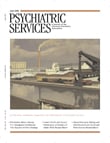This is a much awaited textbook that attempts to codify the diagnosis of mental disorders among persons with intellectual disability. The project was first conceptualized by the National Association for the Dually Diagnosed, in this case referring to people who have intellectual disability and mental disorders, in 1998. It was completed with the collaboration of the American Psychiatric Association and funded by the Joseph P. Kennedy, Jr. Foundation. It is comprehensive in its scope and involved the efforts of hundreds of clinicians and researchers. The textbook consists of 28 chapters and is loosely based on the DSM-IV-TR .
Diagnostic Manual-Intellectual Disability deviates from the familiar DSM in several details. The chapter on assessment and diagnostic features addresses the difficult task of making a diagnosis of individuals who often have communication and behavioral problems. It is followed by an excellent and unique chapter on the behavioral phenotype of genetic disorders. This evolving field will grow as the knowledge develops.
One of the major differences with the DSM-IV-TR is that obsessive-compulsive disorder and posttraumatic disorder are separated from anxiety disorders. These are diagnoses that are frequently underdiagnosed and are very common among people with intellectual disability. This book relies more on evidence-based methods of making a diagnosis than on the expert consensus method. It follows the Cochrane Library 2001 method of classifying five levels of evidence.
Because of the myriad problems of communication, understanding, and behavior that affect people with intellectual disability, it is difficult for clinicians to make accurate diagnoses for people with severe and profound intellectual disability. This is especially relevant in the case of mood disorders and psychotic disorders, where the internal representations of feelings and thoughts are important in making a diagnosis. This book adapts criteria relevant to these concerns. An example is that of a major depressive episode for persons with intellectual disability, wherein almost any physical problem that causes pain or distress can also cause difficulty in focusing attention, sleeping, and eating, as well as psychomotor agitation. Most of the adaptive criteria are meant to be used among individuals with severe and profound intellectual disability.
The chapter on posttraumatic stress disorder is especially interesting because of the complexity of the disorder itself and the reliance by the clinician on data that are given by the patient. The range of traumatizing events seems to be greater for individuals with a lower developmental age, and acting out and disorganized behavior are more common in this population.
The detailed and excellent chapter on sexual and gender identity disorders covers a wide range of topics, including paraphilias and pedophilia. Individuals who have been institutionalized can have behaviors that superficially resemble paraphilias and exhibitionism. Pedophilia is an extremely difficult diagnosis to make because the individual may indulge in pedophilia-like behavior because of a lack of age-appropriate interactions or may not be able to discriminate self, a child, and an appropriate sexual partner.
The chapter on personality disorders cautions about making this diagnosis for an individual with an intellectual disability. In clinical practice it is almost impossible to distinguish a personality disorder because the diagnosis requires rather sophisticated abstract thinking and feelings, such as lack of remorse or empathy, which are often absent among persons with intellectual disabilities.
Overall this is a very satisfactory and well-written manual and will be welcomed by practitioners and academics who work in the field of intellectual disabilities.

